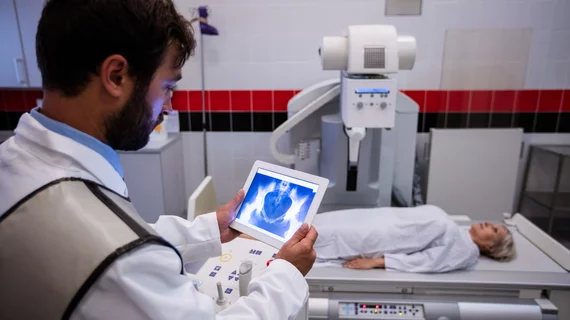‘Seismic shift’ needed for radiologists to communicate radiation risks with info-hungry patients
Most patients who have undergone imaging have little understanding of their radiation dosage or associated risks, but many would like to sit down with radiologists to discuss these issues. Experts say a “seismic shift” is needed to close this communication gap.
That’s according to a new study of 2,866 patients surveyed while waiting for imaging appointments across 16 hospitals, published Wednesday in JAMA Network Open. About 44% said their knowledge of radiation is lacking, with most learning about the topic via radio and TV (27.6%) or the internet (25.3%), including Facebook and other social media outlets.
Despite this, nearly 70% want to discuss their risk with a radiologist. They also listed technologists and general providers as trusted sources.
University of California, San Francisco, experts said there is a definite role for radiologists in this regard, adding patient-centered consultations would benefit all parties.
“What is needed is a systemic and seismic shift in educating physicians and patients, in having candid conversations with patients around imaging that acknowledge the tradeoffs, and in justifying the use of all medical radiation exposure,” Carly Stewart, MHA, with the Department of Epidemiology and Biostatistics at USCF, and co-author wrote in an invited commentary. “In doing so, we improve the safety of medical imaging while reducing the physical, social, and economic toll of overuse and disease.”
The findings are based on responses gathered across teaching and nonteaching hospitals in Italy between June 2019 and May 2020. More than 98% had received at least one imaging test before, with most having involved ionizing radiation.
Of the 2,866 participants, 1,579 (55.1%) didn’t know chest CT delivers more radiation than chest X-ray, while 1,499 (52.3%) understood that nuclear exams can emit radiation. Similarly, 57% were unaware that MRI does not require ionizing radiation.
Additionally, more than half had never received radiation dose details before, during or after their imaging exam, the authors reported. Those with a higher level of education and who received info from healthcare professionals were associated with having a better grasp of radiation issues.
Luca Bastiani, PhD, with the Italian National Research Council, and co-authors, said heavy radiology workloads may contribute to communication lapses between rads and patients. But their findings make it clear something needs to be done to reach info-hungry patients.
“Several studies have highlighted patients’ preference to speak directly with imaging experts about their imaging findings, further emphasizing the need for improved direct communication between radiological staff and patients,” the authors concluded.
Read the full study in JAMA Network Open here, and the invited commentary here.

